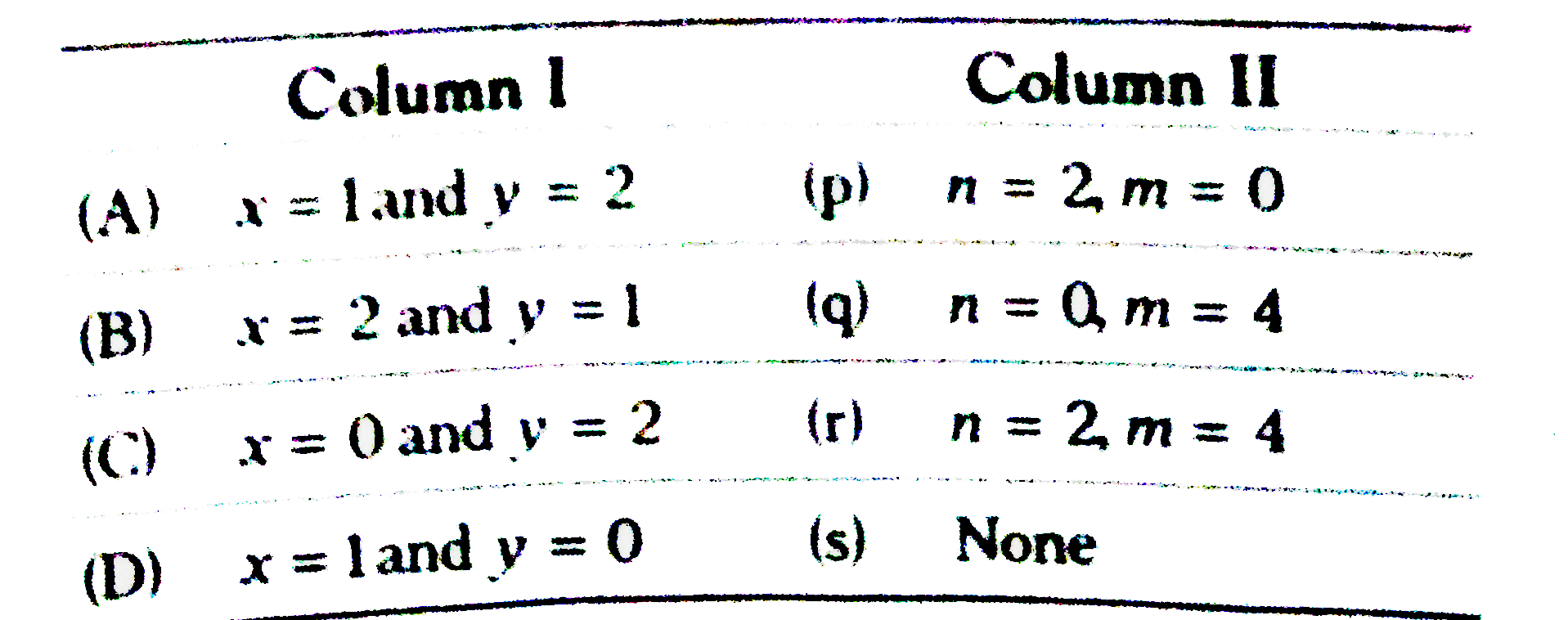The number of beta particles emitted by a radioactive substance is twice the number of alpha particles emitted by it. The resulting daughter is an
Isomer of parent
Isotone of parent
Isotope of parent
isobar of parent
The correct Answer is:C
Step by step video & image solution for The number of beta particles emitted by a radioactive substance is twice the number of alpha particles emitted by it. The resulting daughter is an by Physics experts to help you in doubts & scoring excellent marks in Class 12 exams.
Updated on:21/07/2023Topper's Solved these Questions
- NUCLEIBOOK - AAKASH INSTITUTE ENGLISHCHAPTER - NUCLEIEXERCISE - ASSIGNMENT (SECTION-D)
10 Videos
- NUCLEIBOOK - AAKASH INSTITUTE ENGLISHCHAPTER - NUCLEIEXERCISE - ASSIGNMENT (SECTION-B)
27 Videos
- MOVING CHARGES AND MAGNETISMBOOK - AAKASH INSTITUTE ENGLISHCHAPTER - MOVING CHARGES AND MAGNETISMEXERCISE - Assignment Section J (Aakash Challengers Questions)
5 Videos
- OSCILLATIONSBOOK - AAKASH INSTITUTE ENGLISHCHAPTER - OSCILLATIONSEXERCISE - Assignment (Section D) (ASSERTION-REASON TYPE QUESTIONS)
13 Videos
Similar Questions
Knowledge Check
The number of beta particles emitter by radioactive sustance is twice the number of alpha particles emitter by it. The resulting daughter is an
Aisomer of parentBisotone of parentCisotope of parentDisobar of parentA radioactive substance emits radiations :
Aα, β and γ simultaneouslyBin the order α, β and γ one by oneCX-rays and γ-raysDα or β.
What are the respective number of α and β-particles emitted in the following radioactive decay?
View SolutionWhen a β-particle is emitted by an atom of a radioactive element, the daughter nuclide formed possesses:
View SolutionA nucleus .nXm emits one α and one β particles. The resulting nucleus is.
View SolutionA nucleus of mass 220 amu in the free state decays to emit an α-particle . Kinetic energy of the α-particle emitted is 5.4 MeV. The recoil energy of the daughter nucleus is
View SolutionA nuclide A undergoes α - decay and another nuclide B undergoes β-decay
(a) All the α-particle emitted by A will have almost the same speed
( b) The α- particle emitted by A may have widely different speeds
(c) All the β-particle emitted by B will have almost the same speed
(d) The β-particle emitted by B may have widely different speeds
View SolutionFrom a radioactive substance x numbers of α-particles any y numbers of β-particles are emitted. As a result atomic number decreases by n and mass number by m. Then, match the following two columns.

View Solution
